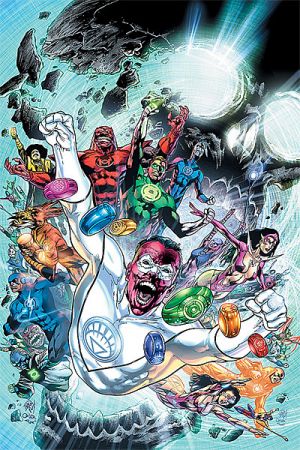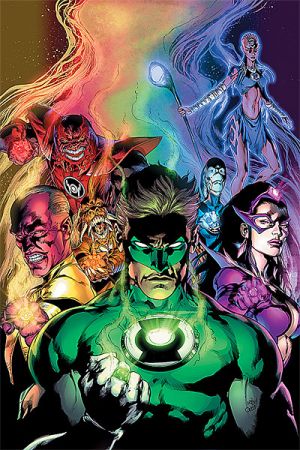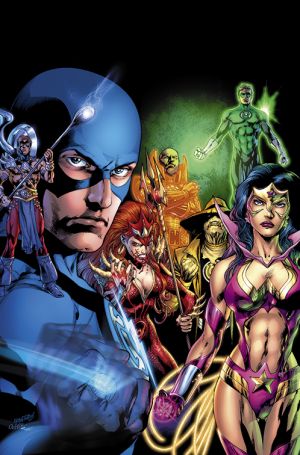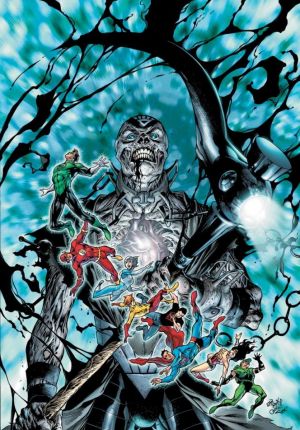- Comics
- Comics Reviews
- Manga
- Comics Reviews
- European Comics
- News
- Comics News
- Press Releases
- Columns
- Spotlight
- Digital Comics
- Webcomics
- Cult Favorite
- Back Issues
- Webcomics
- Movies
- Toys
- Store
- More
- About
By Andy Frisk
March 31, 2010 - 19:28
Sinestro, unable to effectively control the power of The Entity (the manifestation of life in the universe), ends up losing it, and a major Green Lantern character has to step in and save the day, obviously…well it is his series after all. After a very brief formation of a White Lantern Corps followed by the destruction (or rather dispersion) of Nekron, a series of resurrections take place, some loose ends are tied up, and many new potential plot threads are introduced.
 |
Johns ended his epic with a bang, or rather a blast…of white light. The Brightest Day is now before us as well as a new lease on life for some major, and beloved, characters (as well as some not so well beloved). Johns has succeeded in putting together an epic scale, major reboot/reintroduction on a scale Final Crisis couldn’t hold a candle to. Perhaps “reboot” is a bit of a misnomer for Blackest Night, as DCU history isn’t exactly rewritten, but major writing missteps, missing characters (who need to appear periodically in print to retain their membership in the DCU and the collective consciousness of DCU fans), and yes…untimely and ill advised deaths are corrected, brought back, and reversed. Death has never been final in the world of sequential art, but rarely has it been overcome as uniquely as Johns has in Blackest Night. Best of all, the potential storylines that will spring out of Blackest Night’s finale will be many, and engaging.
 |
Early on, I felt that Blackest Night as a whole wasn’t going to hold a candle to Johns’ previous epic, The Sinestro Corps War on a philosophic or thought provoking basis. In the end do I still feel the same way? Not exactly, and in fact, when I look back on the whole epic (thus far—Brightest Day might end up being Part Four of the epic), it becomes obvious that they are all linked thematically, both philosophically and profoundly. While Blackest Night was a bit overextended by the powers that be at DC Comics, most of the short series spinoffs such as Blackest Night Superman and Blackest Night Wonder Woman, in particular, were very well written and emotionally engaging stories that showcased some spectacular artwork. Emotions ran high during Blackest Night, for its characters and the series’ readers, and this is totally fitting. The many emotional spectrum corps’ power rings are powered by the prevalent emotion of the corps rings’ bearer. Anger, greed, fear, will, hope, compassion, and love are represented by the varying Corps, and all are powerful in their own way. To say that an epic science fiction tale that dealt with the basic emotions of sentient life and the power of those emotions, which operate and dominate the likes of all from birth to death, had an emotional effect on its readers and characters seems a bit obvious. Johns meant for this part of the epic to be obvious though. Green Lantern Rebirth started it all off with the return of Hal Jordan to his rightful place in the DCU. Jordan was back and we as readers shared his joy at returning to the Green Lantern Corps. The Sinestro Corps War dealt with the troubling question of the use of fear as a weapon and how it can corrupt a well meaning soul, twisting him into something evil. Blackest Night dealt with the need to face one’s inner fears, and the biggest fear shared by all living beings, death. Thematically (and philosophically), all three parts of Johns’ epic, when viewed together, are straightforwardly obvious, yet profound at the same time.
 |
The theme of death and its consequences for the living served as the major underlying thematic link. Jordan returned from the dead, used lethal force, and finally confronted the manifestation of death itself. In the end, he and many other characters literally got a new lease on life (something we all get occasionally metaphorically), but the idea is the same. When something in our lives dies, often another opportunity, chance, or experience is born. At the end of Blackest Night, Johns gives life to several characters that needed a new start while birthing plot lines that will draw out for years. That’s pretty profound.
 |
“Death be not proud” seems a fitting way to sum up Blackest Night in a borrowed, but fitting, phrase. The darkness is defeated and life is celebrated. Many characters get a new lease on life. They metaphorically give us hope to overcome our own blackest nights, wars, and rebirths of the soul. As Hal Jordan tells Nekron, “We ALL choose life when given the chance. We’re ALL connected. We choose to live again…” It’s our will to pick up the pieces and move on, to live, and to overcome that makes us, and Geoff Johns’ epic which reflects this truth, truly unique.